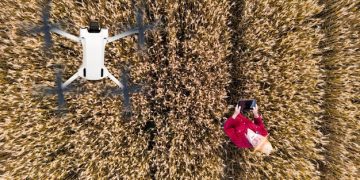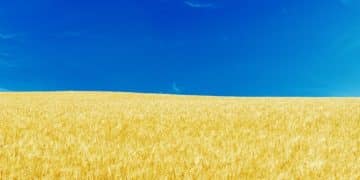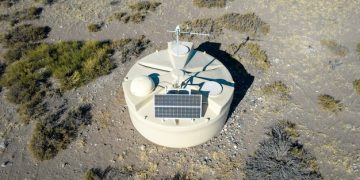How Precision Agriculture Tech Boosts US Farm Yields by 15%
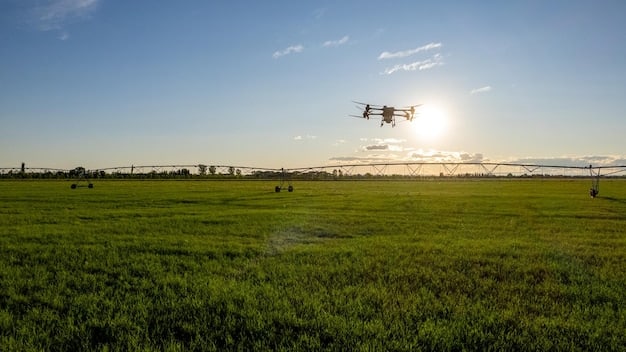
US farmers are leveraging precision agriculture technologies, including GPS guidance, drone imagery, and sensor-based monitoring, to optimize resource use, reduce waste, and achieve yield increases of up to 15% through data-driven decision-making.
The agricultural landscape in the United States is undergoing a technological revolution, driven by the need for increased efficiency, sustainability, and higher yields. How are US farmers using precision agriculture tech to increase yields by 15%? Let’s delve into the specific technologies and strategies that are transforming American farms.
Understanding Precision Agriculture
Precision agriculture, at its core, is about using technology to make farming more accurate and efficient. It involves collecting and analyzing data to make informed decisions about planting, fertilizing, irrigating, and harvesting crops. This approach allows farmers to tailor their practices to the specific needs of different areas within their fields, optimizing resource use and minimizing waste.
Key Components of Precision Agriculture
Several technologies and practices fall under the umbrella of precision agriculture. These include GPS (Global Positioning System) guidance, remote sensing technologies like drones and satellites, sensor-based monitoring, variable rate technology (VRT), and data analytics platforms.
Benefits of Precision Agriculture
The adoption of precision agriculture offers numerous advantages to US farmers. Higher yields, reduced input costs (fertilizers, pesticides, water), improved resource efficiency, and enhanced environmental sustainability are just a few of the benefits. It also enables farmers to make proactive decisions, identify problems early, and implement targeted solutions.
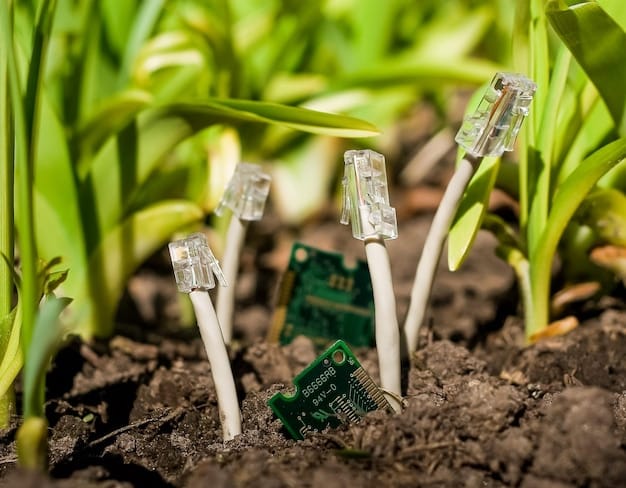
In essence, precision agriculture empowers farmers to move away from a one-size-fits-all approach and adopt a more nuanced, data-driven approach to crop management.
GPS Guidance and Automated Machinery
GPS guidance systems have become increasingly common on US farms, providing unparalleled accuracy in field operations. These systems utilize satellite technology to guide tractors, harvesters, and other machinery, ensuring precise planting, spraying, and harvesting.
Benefits of GPS Guidance
GPS guidance systems reduce overlap, minimize skips, and improve overall field efficiency. This leads to reduced fuel consumption, lower input costs, and increased productivity. Automated machinery, guided by GPS, can operate day and night, further enhancing efficiency and timeliness.
Examples of GPS-Guided Applications
- Auto-steering tractors: Automatically steer tractors along predetermined paths, reducing operator fatigue and improving accuracy.
- Precision planting: Ensures that seeds are planted at the correct depth and spacing, maximizing germination and emergence.
- Variable rate application: Allows for the precise application of fertilizers, pesticides, and herbicides based on specific field conditions.
With GPS guidance, even inexperienced operators can achieve high levels of accuracy, leading to consistent and improved crop performance across the entire field.
Remote Sensing Technologies: Drones and Satellites
Remote sensing technologies, such as drones and satellites, are playing a crucial role in precision agriculture by providing farmers with a bird’s-eye view of their fields. These technologies capture high-resolution imagery that reveals valuable information about crop health, stress levels, and variability.
Drone Applications in Agriculture
Drones equipped with specialized cameras can capture images and videos of fields, providing insights into plant health, weed infestations, irrigation problems, and pest outbreaks. This information allows farmers to identify problem areas quickly and take corrective action.
Satellite Imagery for Large-Scale Monitoring
Satellite imagery provides a broader perspective, allowing farmers to monitor large areas of land and track changes over time. This technology is particularly useful for assessing overall crop health, identifying nutrient deficiencies, and predicting yields.
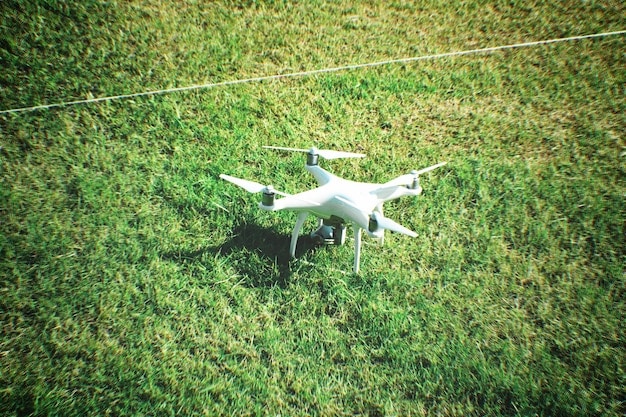
Data Analysis and Interpretation
The data collected from drones and satellites is processed and analyzed to create maps and reports that farmers can use to make informed decisions about crop management. These tools help farmers optimize irrigation, fertilizer application, and pest control strategies.
By using remote sensing technologies, farmers can gain a better understanding of their crops and make more effective decisions, leading to increased yields and reduced input costs.
Sensor-Based Monitoring and Data Analytics
Sensor-based monitoring is another critical component of precision agriculture, involving the use of sensors to measure various parameters such as soil moisture, nutrient levels, temperature, and humidity. These sensors provide real-time data that can be used to optimize irrigation, fertilization, and other management practices.
Types of Sensors Used in Agriculture
There are various types of sensors used in agriculture, including soil moisture sensors, weather stations, nutrient sensors, and plant health sensors. These sensors can be deployed in the field, mounted on machinery, or integrated into irrigation systems.
Real-Time Data and Decision Making
The data collected by these sensors is transmitted wirelessly to a central platform, where it is analyzed and presented to the farmer in a user-friendly format. This real-time data enables farmers to make timely decisions about irrigation, fertilization, and pest control.
- Soil moisture sensors: Help farmers optimize irrigation by providing accurate data on soil moisture levels.
- Weather stations: Provide real-time weather data, enabling farmers to anticipate weather events and adjust their management practices accordingly.
- Nutrient sensors: Measure the levels of essential nutrients in the soil, helping farmers optimize fertilizer application.
By integrating sensor-based monitoring with data analytics, farmers can gain a comprehensive understanding of their crops and make data-driven decisions that lead to improved yields and resource efficiency.
Variable Rate Technology (VRT)
Variable rate technology (VRT) is a key component of precision agriculture that allows farmers to apply inputs, such as fertilizers, pesticides, and seeds, at different rates across a field based on specific needs. This targeted approach ensures that resources are used efficiently and effectively, minimizing waste and maximizing yields.
How VRT Works
VRT systems use data from various sources, including soil maps, yield maps, and sensor data, to create prescription maps that specify the appropriate application rate for each area of the field. These maps are then loaded into specialized equipment that automatically adjusts the application rate as it moves across the field.
Benefits of VRT
VRT offers numerous benefits, including reduced input costs, improved resource efficiency, and increased yields. By applying inputs only where they are needed, farmers can minimize waste and reduce the environmental impact of their operations.
Examples of VRT Applications
- Variable rate fertilization: Applying different rates of fertilizer based on soil nutrient levels and crop needs.
- Variable rate seeding: Adjusting seeding rates based on soil type and expected plant density.
- Variable rate irrigation: Applying different amounts of water based on soil moisture levels and crop water requirements.
VRT is a powerful tool that enables farmers to optimize resource use and improve crop performance while minimizing environmental impact.
Case Studies: Precision Agriculture in Action
Several case studies demonstrate the effectiveness of precision agriculture in increasing yields and improving farm profitability. These examples highlight the real-world benefits of adopting precision agriculture technologies and practices.
Corn Yield Increase in Iowa
A study conducted in Iowa found that farmers who adopted precision agriculture practices, including GPS guidance, variable rate fertilization, and sensor-based monitoring, experienced an average yield increase of 15% compared to those who did not use these technologies.
Water Savings in California
In California, farmers who used soil moisture sensors and variable rate irrigation systems were able to reduce their water consumption by up to 20% while maintaining or even increasing their yields. This demonstrates the potential of precision agriculture to conserve water resources in water-scarce regions.
Reduced Fertilizer Use in the Midwest
Farmers in the Midwest who implemented variable rate fertilization were able to reduce their fertilizer use by up to 10% without sacrificing yields. This not only saved them money but also reduced the environmental impact of fertilizer runoff.
These case studies illustrate the significant potential of precision agriculture to improve farm profitability, resource efficiency, and environmental sustainability.
| Key Point | Brief Description |
|---|---|
| 🚜 GPS Guidance | Enhances accuracy in planting, spraying, and harvesting. |
| 🛰️ Remote Sensing | Drones and satellites monitor crop health and field conditions. |
| 🌱 Sensor Monitoring | Real-time data on soil moisture, nutrients, and weather conditions. |
| 💧 Variable Rate Tech | Precision application of inputs based on field-specific needs. |
Frequently Asked Questions
▼
Precision agriculture involves using technology to optimize farming practices. It relies on data collection and analysis to make informed decisions regarding planting, irrigation, and harvesting.
▼
Drones capture high-resolution images of fields, assessing plant health, detecting weed infestations, and identifying irrigation issues promptly for quick and targeted solutions.
▼
GPS guidance systems reduce overlap, minimize skips, and optimize field efficiency. Leading to reduced fuel consumption, lower input costs, and increase in overall productivity.
▼
VRT enables targeted input application based on field’s needs to minimize waste. It also maximizes yields by ensuring resources are effectively used across the area.
▼
Yes, precision agriculture can benefit small farms with affordable technologies and data-driven decisions. It will improve efficiency and optimize resource use for increased profits.
Conclusion
In conclusion, the adoption of precision agriculture technologies is revolutionizing the agricultural sector in the United States. By leveraging GPS guidance, remote sensing, sensor-based monitoring, and variable rate technology, US farmers are achieving significant yield increases, improving resource efficiency, and reducing their environmental footprint. As technology continues to advance, precision agriculture will play an even greater role in ensuring the sustainability and profitability of American agriculture.
